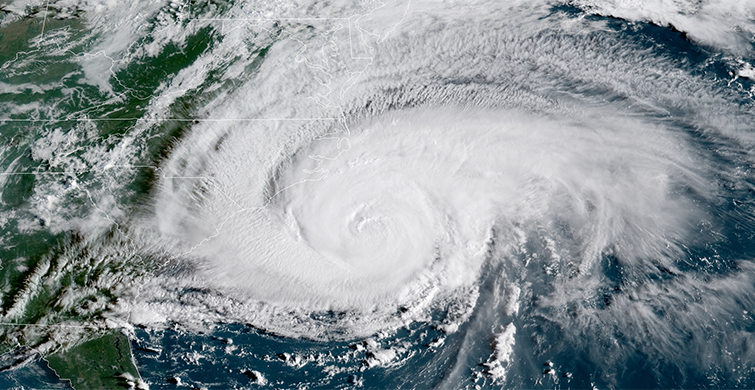Vulnerable Populations in the Path of Hurricane Florence

September is the height of hurricane season, and residents of North and South Carolina are just starting to clean up in the aftermath of Hurricane Florence.
While a storm this severe threatens all those who reside in its path, certain populations are particularly vulnerable. Hurricanes Katrina and Rita, which devastated the Gulf Coast in 2005, and more recently Harvey and Maria, which hit the Texas Gulf Coast and Puerto Rico last year, highlight the disproportionate damage that severe storms can have on people of color and people with low incomes. The area threatened by Florence has a relatively high concentration of both groups.
These groups of people may have more difficulty accessing the resources they need to evacuate, and later to return to their homes and replace damaged belongings. The area currently under an evacuation order for Hurricane Florence has some high concentrations of households that do not have access to a car, for example, which could make coordinating evacuations more difficult. These areas may be good candidates for additional evacuation assistance such as bus service to nearby shelters.
People of color and people with lower incomes are also more likely to live near polluted areas, which can make floodwaters a more dangerous health risk. The coastline from North Carolina to Georgia is spotted with clusters of Superfund sites that coincide with densely populated areas. Neighborhoods surrounding these polluted sites might benefit from targeted programs such as outreach campaigns on the dangers of floodwaters.
Other particularly vulnerable groups include those who live alone, the elderly, families with young children, pregnant people, and more. For example, people who already have health problems may be susceptible to disruptions in their supply of medication, or to developing breathing problems from mold or other environmental contaminants associated with flooding. There are several areas in the path of Hurricane Florence where residents have reported being in poor health. These areas may need additional capacity at clinics or pharmacies in the weeks following the storm, or extra assistance with mold remediation.
In the wake of storms, one can look at FEMA disaster declarations to narrow in on data for the affected area.
When planning for evacuation and recovery from intense storm events, it is important to understand not only how many people might be affected, but who might be impacted the most.
Additional resources:
- Visit https://www.nhc.noaa.gov/graphics_at1.shtml?cone for the latest forecast from the National Hurricane Center.
- To learn more about disaster declarations, visit https://www.fema.gov/disasters and https://www.fema.gov/disaster-declaration-process.
- To learn more about environmental justice, visit https://www.epa.gov/environmentaljustice.